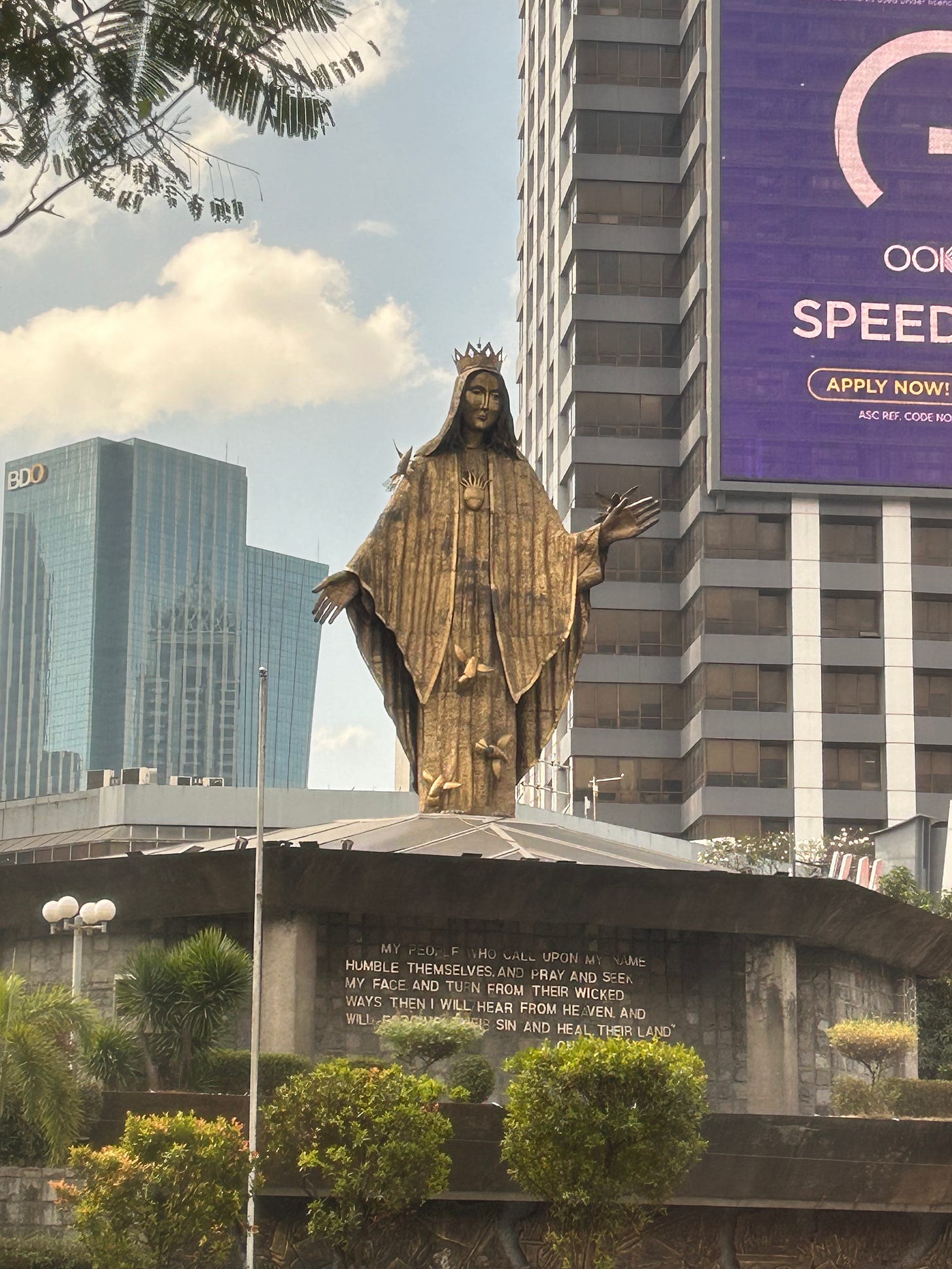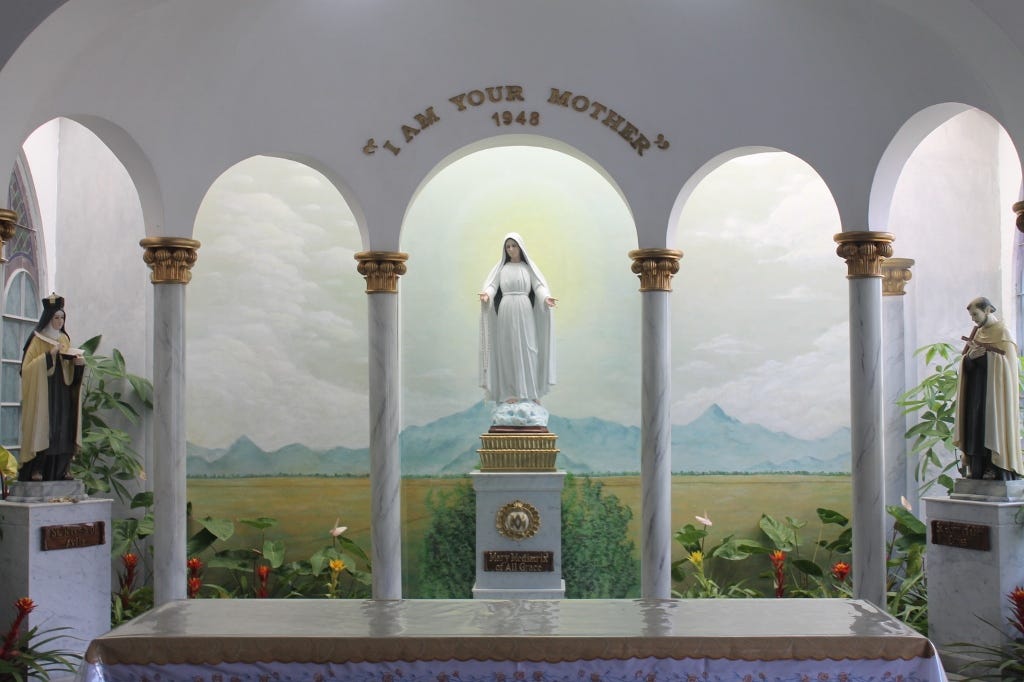In Filipino films, the ‘mother’ archetype is often the one who suffers most, a price she has to pay for her children to succeed in life. The filmmaker Rafael Ma. Guerrero said that women suffer in local films because that is the main role they are given to play—this, he said, panders to some kind of “sadistic streak in our macho consciousness.”1
The highest maternal archetype is the divine mother: Mary, the mother of God. In the Philippines, there is a strong Marian devotion. We can see this in the variety of Marian imagery across the archipelago, most especially the towering bronze statue of Mary, Queen of Peace, who continues to stand watch over EDSA, to commemorate the 1986 People Power Revolution that ousted Marcos Sr.
I was actually raised around devotees of Mary, Mediatrix of All Grace, the variation of Our Lady who appeared as an apparition in Lipa, Batangas.2 We were close with a Catholic faith healer who worked with a statue of Mary Mediatrix, and I have seen many people enter trance states and speak in tongues.
On the topic of Marian devotion, the priest-psychologist Fr. Jaime Bulatao reflected that it may be because the mother has always held a “central place” in the Filipino family, which we can trace back to the pre-Hispanic time. It is believed, then, that we can approach the mother if the father feels too distant. The mother is not just “secondary” to the father; she holds a more important position.3
On the divine mother, Neils Mulder adds that the mother embodies what matters most, and that if we go against her, that is “treason to her goodness.” This is, they said, a manifestation of walang utang na loob. So, a person’s lack of respect for the mother implies their own lack of self-respect.4
The archetypal mother in Filipino consciousness doesn’t just suffer because of an inherent masochism; she is the embodiment of hope through loving devotion, of lakas ng loob (inner strength) in the face of struggle. Solidarity (pakikibaka) with the mother archetype is expressed through the child’s utang na loob, which comes in the form of helping the mother actualize her dreams. Through the child, the mother is immortal.
The Philippines is seen as Inang Bayan (Motherland) in the sense that she gives of herself to the point of suffering, much like Christ’s own mother. The early Filipino revolutionaries understood this. Emilio Jacinto, a young general and writer, wrote the code of the anti-colonial movement against the Spaniards, and included the following passage:
Ang babae ay huwag mong tingnang isang bagay na libangan lamang, kundi isang katuwang at karamay sa mga kahirapan nitong buhay; gamitin mo nang buong pagpipitagan ang kanyang kahinaan, at alalahanin ang inang pinagbuhatan at nag-iwi sa iyong kasanggulan.
My translation of this is as follows: “Don’t treat women as toys, but as companions in the difficulties of life; care for her in her weakness and remember that you came from a woman, and were cared for by her in your most vulnerable state.” The mother’s liberation is tied to our own.
“Archetypal Images in Philippine Cinema,” in Jung Festival ‘95 Lecture Series: A Glimpse into the Collective Unconscious (Office of Research and Publications, Ateneo de Manila University, 1997)
In 1951, the Vatican has ruled that the Marian apparition there had “no sign of supernatural character or origin.” It nevertheless holds power for many devotees. (Read More)
Phenomena and their Interpretation (Ateneo de Manila University Press, 1992)
“Localization and Philippine Catholicism,” Philippine Studies 40, no. 2 (1992): 240-254







